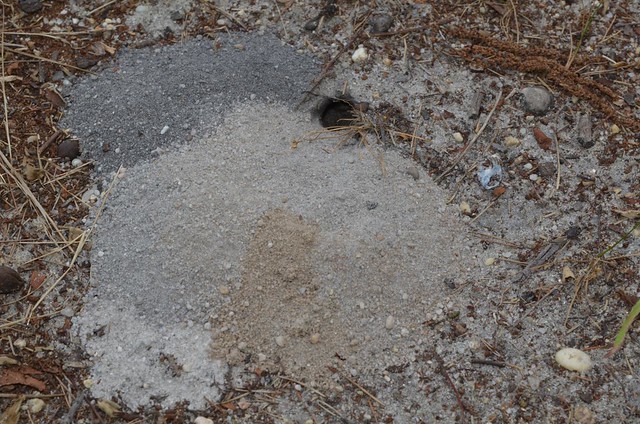
This is Dolichovespula maculata, the Bald-Faced Hornet. Despite its prevalence, this is my first direct encounter with one.






Cicada killers are solitary wasps. Males emerge from pupal cases in mid-July to early August, a few weeks before the females. The males tunnel out of the ground, leaving telltale holes, and select a territory that they actively defend. Females mate soon after emerging, and then begin digging burrows in the ground using their mandibles and legs. The burrows can be several feet deep with numerous branches.Felis catus ssp. cicadakilleratus 'Ripley' on my back porch, August 2009
Once construction is complete, the female searches in trees and shrubs. Upon capturing a cicada, the female stings it injecting venom. Then, she carries the cicada back to the burrow, where she lays an egg on its living, but paralyzed body. Within two weeks, the egg hatches into a larva, eats the cicada, and develops into a pre-pupa, the stage at which it will spend the winter. Cicada killers are active in late summer, the same time that cicadas are present. By September, most adults have died.
Although visually alarming, these wasps pose little threat. Females are not aggressive and rarely sting, unless excessively provoked. Males often display territorial behavior and will dive-bomb people’s heads; however, they have no sting and pose no real threat.
- Cicada Killer, Master Beekeeper Program, Cornell University
We seem to have an underground yellow jacket nest on our front walkway with a "Queen" that is about 2.5 inches long.....a little frightening to me but will absolutely scare the wits out of my kids- she looks like she can carry her own luggage! Anyone know an exterminator that can come and get rid of this Quick!?[bit.ly]
Thanks, Lori